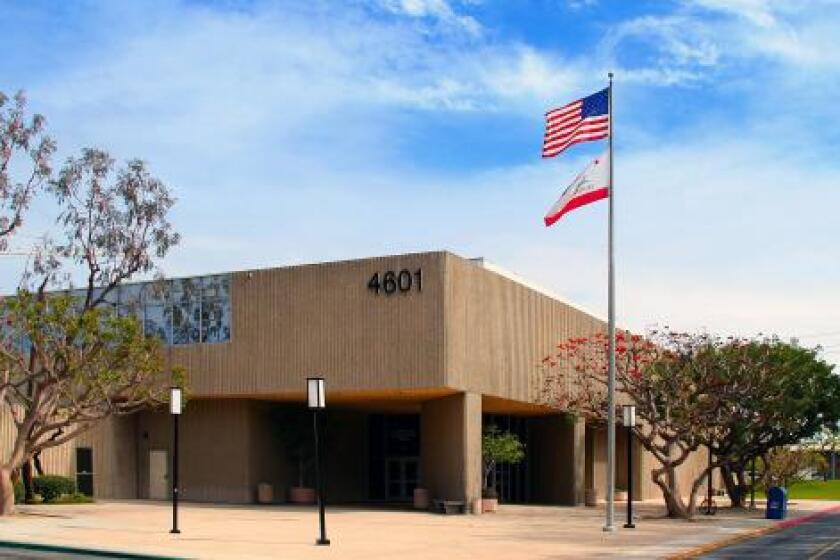Embellished Depression
- Share via
“Welcome to Hooverville, Capital of Chaos,” a scrawled sign read.
Edison High School’s amphitheater last Thursday and Friday looked more like a shanty town than a place of learning, as part of a project on the Great Depression.
The temporary cities that were constructed by homeless people during the period were named “Hoovervilles” after the unpopular president of the time, Herbert Hoover, who was seen as responsible for the nation’s economic decline at the time.
The school’s U.S. history teachers have been implementing the Hooverville project for the past four years. Following an in-depth study of the time, students constructed their own cardboard shanties and lived the lives of World War I veterans seeking benefits from the federal government.
The students were recreating the tale of the Bonus Army — about 15,000 veterans who established a shantytown in the Anacostia, or historically African American, portion of the District of Columbia in 1932.
Other infamous Hoovervilles around the country were located in St. Louis, New York’s Central Park, Seattle and Portland, Ore. Their residents were served by soup kitchens and other charity organizations; many of the makeshift towns formed their own governments and social institutions.
“I didn’t know anything about the Great Depression before,” said Brad Schultz, 17. “Usually people just read about it in school. I’m glad we’re at a school where we actually do something to learn about it.”
Edison students used big-screen television and high-end toilet boxes to build their shanties.
Clad in fitted flannels and Ugg boots, many of them looked more like 1990s grunge-themed spirit day participants than Hooverville denizens.
In an equally anachronistic twist, some students “created” amenities like satellite dishes and vending machines out of spare cardboard.
Each student was told to bring bread, coffee or hot cocoa, and Campbell’s chicken noodle soup to school; the supplies were used to create a bona-fide soup kitchen, where the students assembled in long lines to take their only meal.
Students were graded on their shanties, signage and dress. They also had to write a letter to Congress that day.
Teacher Bruce Belcher, dressed in a large poncho and skull cap, actually walked around campus during the school’s morning break, asking for change.
“Some of the kids thought I was a real homeless guy,” he said.
“But this year, I found it harder to get money from the kids. I really did. Some of the kids’ parents are losing their jobs. I’m also the athletic director, and we’ve waived some of the kids’ transportation fees. But I don’t think it will get better any time soon — and this is a nice area. I shudder to think what will happen to people around the country.”
At the end of the session, the students “marched” to the administration building, where they demanded their wages and bonuses of the school, just as the veterans did on the steps of Congress.
And just as the veterans were turned down, the students suffered a withering defeat.
The real Anacostia Hooverville was demolished by the U.S. Army.
CANDICE BAKER can be reached at (714) 966-4631 or at [email protected].
All the latest on Orange County from Orange County.
Get our free TimesOC newsletter.
You may occasionally receive promotional content from the Daily Pilot.



